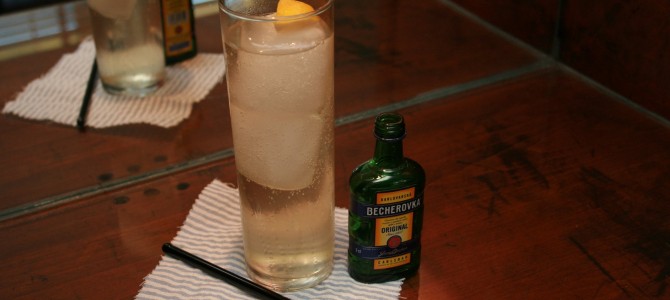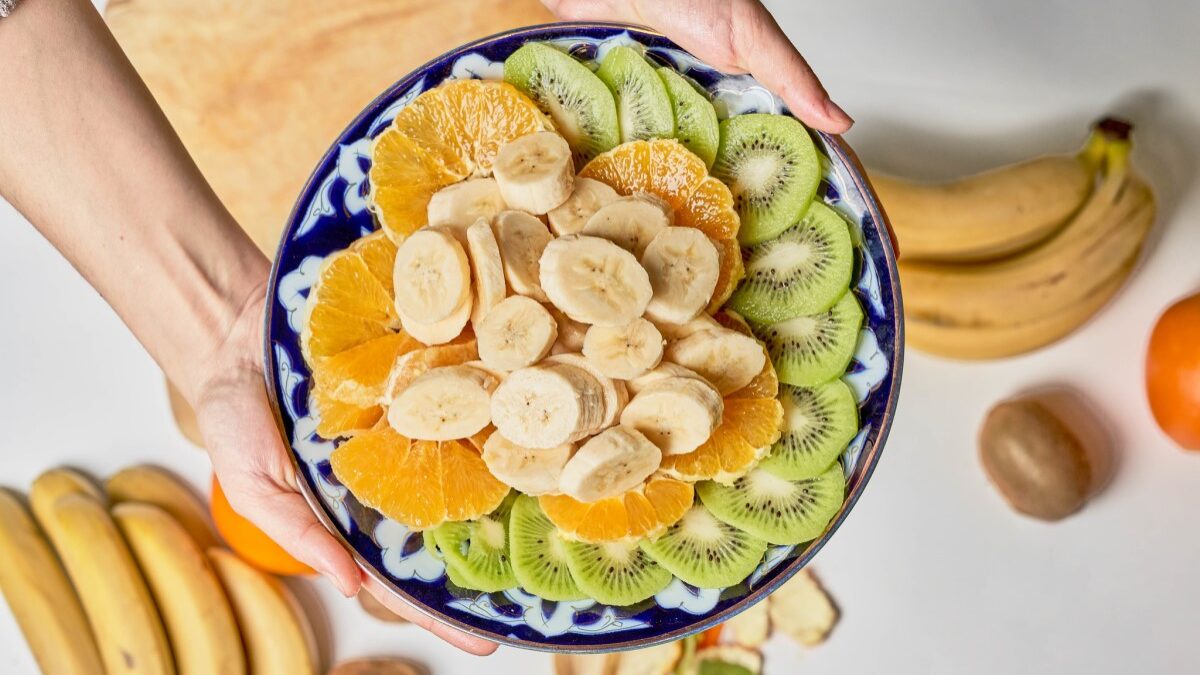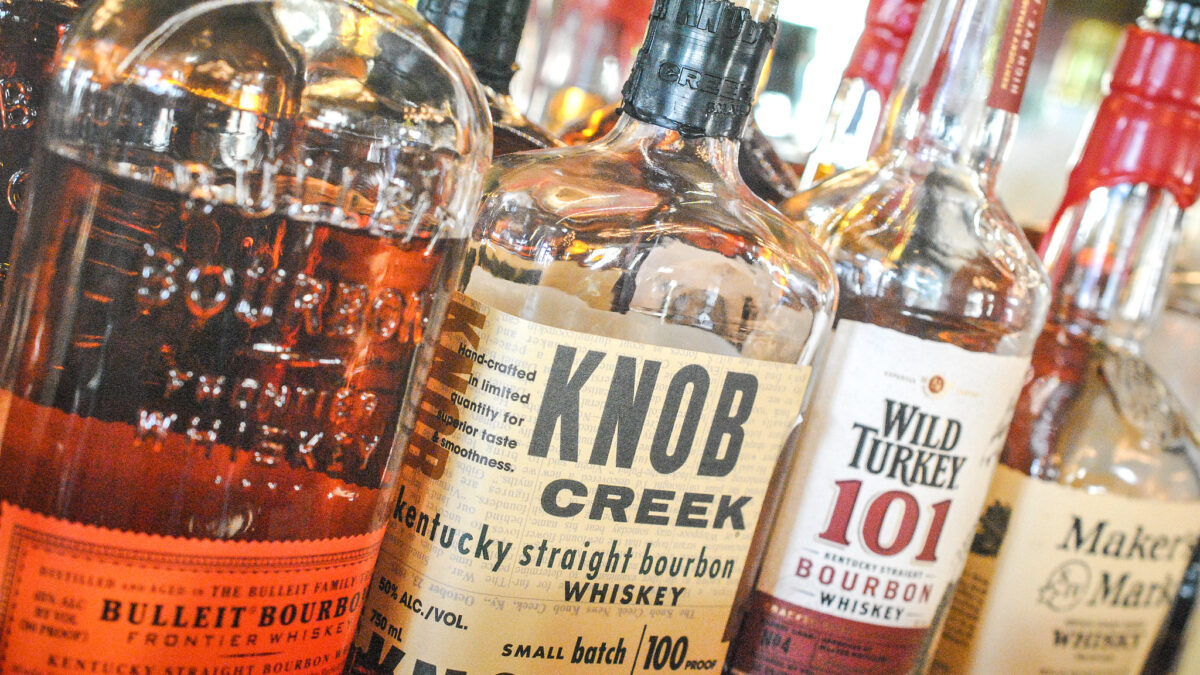Prague, Czech Republic — After nearly two weeks in Europe, we’re on the final leg of our trip. I admit to being somewhat exhausted. That could be due to the late hours I’ve kept while overseas. I only partially adjusted to the time difference, so I have relied on strong coffee and a pathological aversion to “missing anything” to keep me going. Or it could just have been Prague, which took a lot out of me.
Before arriving in Prague, my wife and I traveled by train from Vienna to the castle town of Český Krumlov, where we spent one night. We made good time, and arrived in the early afternoon to the charming Hotel Old Inn on the town square. Krumlov is like stepping into a little fairy tale (albeit with more souvenir shops). The quaint clay-tiled roofs of the town spread out below an imposing yet beautiful castle on a cliff. In true fairy-tale fashion, in the 1600s the lord of said castle was a depraved bastard of the Holy Roman Emperor who ended up murdering the barber’s daughter and dismembering her corpse.
Remodeled and restored several times over tumultuous centuries, Castle Krumlov boasts architectural features from a number of historical periods, including rococo gardens and a Baroque theater. After the 1989 Velvet Revolution, the most recent restorations have all but erased the signs of neglect from the Communist era. I highly recommend paying a visit to this little town and exploring its side streets.
While you’re there, I also recommend stopping in to a very fine cocktail bar called Apotheka. The gentlemen there do great work and take a deserved measure of pride in their offerings. I was served a creative mix including dark beer, mint, and a balsamic reduction. I wish I’d had the wherewithal to note all the ingredients or ask for the recipe, but at that point in the evening I wasn’t sure where my withal went. You’ll just have to go there, and if you go there you’ll just have to trust me.
Watch Out for the Drunkbros and Street Vendors
From Krumlov we took the train to Ceske Budejovice to meet our train to Prague, and it was a near thing. We had 10 minutes to make our connection, which were quickly eaten up waiting around doing nothing. We informed the conductor, who called ahead and very courteously delayed our connecting train and every person aboard on our behalf. The five minutes were all we needed, and we were on our way. Another triumph for European rail travel. From Hell’s heart I stab at thee, Amtrak.
Arriving to Prague in the evening, we made our way by foot to our apartments in Old Town, on Kozna Street. We elected to go with an apartment for Prague, just to be different. It was, overall, a good choice. The Prague Residences Apartments keep their units in good shape, and the central location is convenient for getting anywhere in this very walkable city. We never even felt the need to take public transport.
Had we known what Old Town was like, though, we might have chosen a different spot. How shall I put this? Prague in early September seems to be overrun with the European subspecies of the “drunkbro.” Known in some circles as a “fratty douche,” and commonly seen expelling the contents of their stomachs onto sidewalks worldwide at about 11:45 pm local time, the drunkbros were thick on the ground during our stay. This necessitated some caution, though for the most part they were as well-behaved as drunkbros can be.
Of more concern were the street vendors in the Old Town Square. Too late we realized that you should never buy food or beverage on the square itself. The local currency is the koruna (crowns). We paid about 450 koruna (22 bucks) for a paltry slab of (only somewhat delicious) ham and two beers, which was robbery no matter how you slice it. You should never pay more than 40 or 50 koruna for a beer while in Prague.
I was actually almost pickpocketed later that evening (another thing to never do in Prague: stop to help an old woman who asks for a light at 1 a.m.) and I was still more upset about being cheated on that ham. There are fantastic places to eat and drink just off the square, and you’d be better served to find them. A full meal, with drinks, can be had for about what we paid for street ham. Lesson learned.
Prague Gets Better with Absinthe
After that first night, our experience in Prague improved dramatically. We went grocery shopping for the week, crossed Charles Bridge, visited the castle and cathedral (going up that hill, for the first time in my life I thought a Segway looked like a good idea), and went to the Alphonse Mucha museum. You may recognize Mucha as a driving creative force behind the Art Nouveau style. Many buildings in Prague showcase Art Nouveau architectural elements and stained glass, adding a certain charm to walking through even the busiest downtown areas.
On our next-to-last day in Prague, we were feeling the physical exhaustion of weeks of travel. Our interest in all the fantastically stimulating things around us was flagging as well. As we trudged back to our apartment, spirits decidedly dimmed, I suggested we ought to duck into the Absintherie. This turned out to be a fantastic idea, which is rare for me. We had a Czech absinthe in the Czech style, which involves a significant amount of fire. Flashy, but perhaps not the best way to treat the liquor. Regardless of the finer points, upon consumption we found our enthusiasm remarkably restored and elected to walk back across Charles Bridge to find a decent hamburger and combat the slight case of homesickness we’d developed. It really was remarkable how much it helped, and so we returned that night to enjoy some more. This time we had it in the French style, with a slow ice water drip. This method is far superior in terms of both the taste of the drink and the ritual of preparation.
On the whole, Prague has a few blemishes (I blame the Communists, which I think is a generally safe approach) but it was still a remarkable place to visit. We ended our time there with a concert put on by the Ministry of Culture (not by those barkers in the ridiculous frock coats) as part of the Dvorak Festival. At the deconsecrated Convent of St. Agnes, we were treated to the music of Smetana, Dvorak, and Schoenberg. As I sat in the dark and listened to the strings soaring away to heaven, I could almost imagine that I didn’t have to go back home. Almost.
Beton: A Czech-Style Gin and Tonic, Using Becherovka
The end of a long and pleasant journey necessitates a bit of consolation, so I set about the task by visiting liquor marts around Prague. Czechs make great beer, but their spirits are less well-known. I could have chosen from a very fine selection of mead, or some slivovice, but I wanted something that would put a little hair on my chest. I found it with Becherovka.
Becherovka is an herbal bitters, produced since 1807 according to a secret recipe. Only two people in the world know it, and once a week those two enter a room to mix all the herbal ingredients together. The result is fairly interesting, but it should probably come with a warning label. When sipped alone, Becherovka is spicy, with hints of different herbs and a mild alcohol finish. Much of the finer detail is swept up in the bitterness, though. It has one hell of a bite to it. The stuff won’t just put hair on your chest, it will sprout a luxurious Eastern European mustache on your upper lip.
It’s much more refreshing when mixed with tonic water. Called a Beton (for Becherovka and Tonic), in Czech it is also a play on words, as beton means “concrete.” The recipe is basic.
- 2 oz Becherovka
- Tonic water
- Lemon wedge
Add ice to a Collins glass, and pour over the Becherovka. Top with tonic water (about 4 oz.) and give it a gentle stir. Squeeze the lemon into the drink and drop it in.
Right away, you’ll notice that things have smoothed out considerably. The bitterness is still there, but restrained. It’s far easier to enjoy the other flavors at play. The expansive taste of cloves and cinnamon were especially noticeable. Perhaps some allspice? It put me in mind of Christmas, very rich and round. Yet it is thirst-quenching and easy on the stomach.
Especially for those of us who pass the winter in warmer climes, the Beton could become an outside-the-box alternative to your standard gin and tonic. With a few tweaks, the standard recipe could even be beefed up with gin itself. Fortunately, Becherovka is available domestically. I plan to keep a bottle on hand so I can reminisce about the final days of my first trip to Europe.









